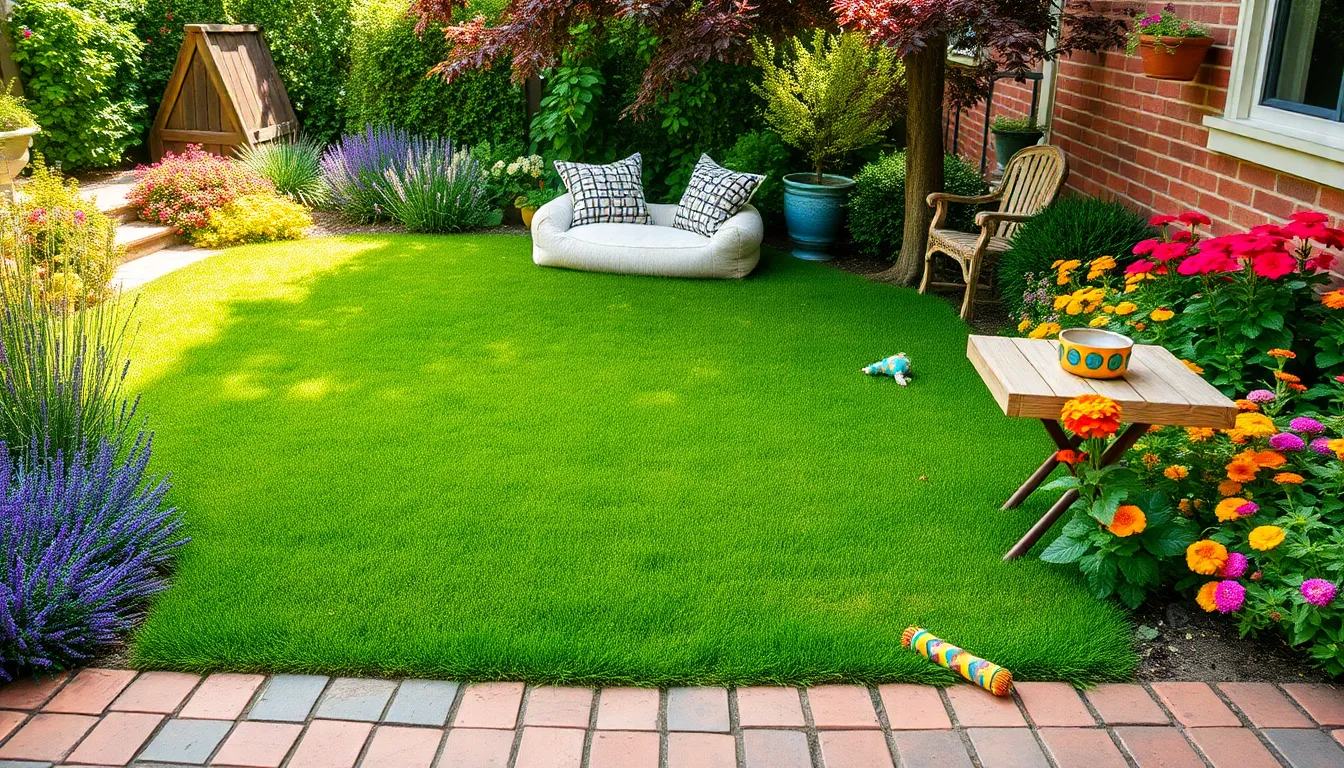Creating a garden that welcomes both plants and pets can transform your backyard into a harmonious haven. Whether you’re just starting out with gardening or you’re a seasoned green thumb, understanding how to make your outdoor space safe and enjoyable for your furry friends is both a rewarding and essential endeavor. Pets add joy to our lives, and ensuring their environment is as nurturing as it is for your plants can elevate your gardening experience to a new level of fulfillment.
In this guide, we’ll explore practical tips and thoughtful strategies to make your garden a pet-friendly paradise. From selecting non-toxic plants to designing pet-safe pathways, you’ll discover how to balance aesthetics with functionality, ensuring that both your botanical and animal companions thrive. Gardening is an art that embraces both beauty and balance, and by the end of this article, you’ll be equipped with the knowledge to create a garden that is as delightful for your pets as it is for you.
Select Non-Toxic Plant Species
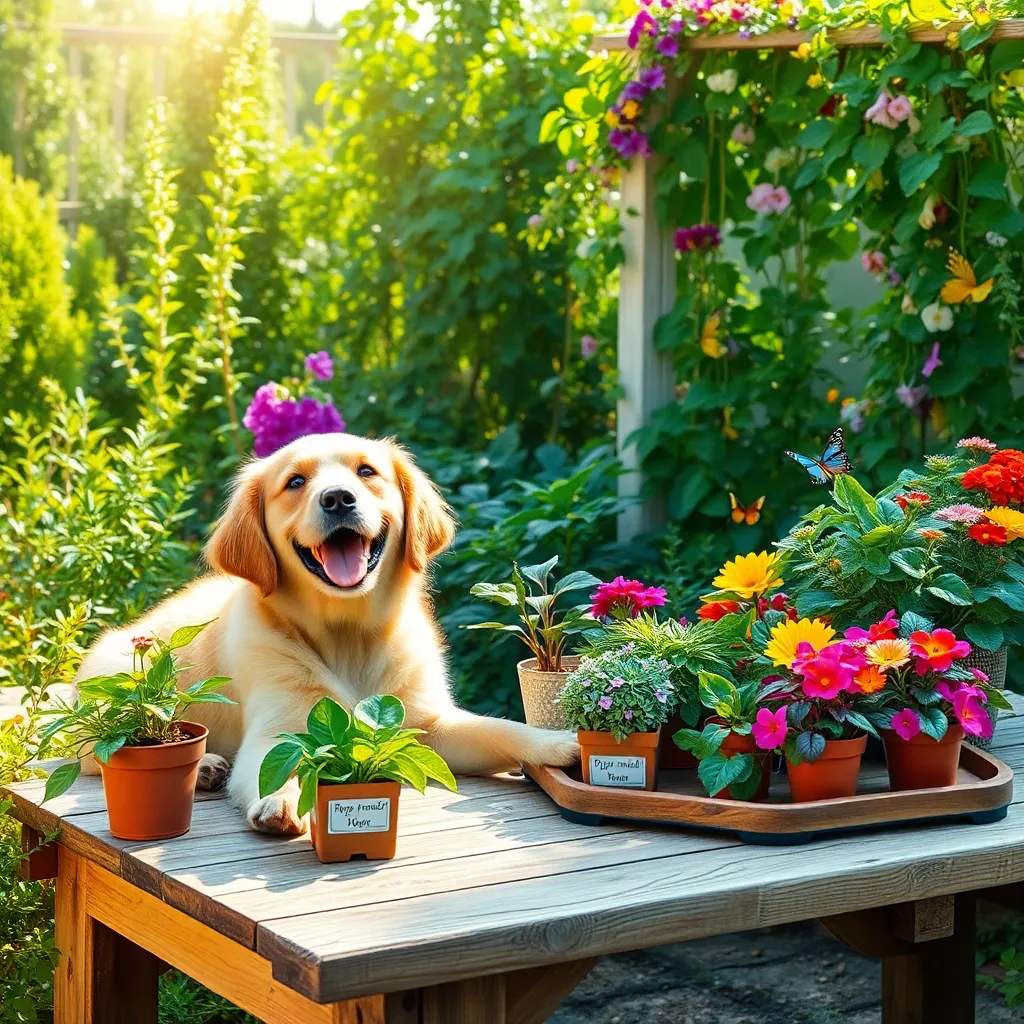
One of the most effective ways to make your garden pet-friendly is by selecting non-toxic plants that pose no harm to curious animals. Opt for plants like marigolds, sunflowers, and snapdragons, which are safe for pets and add vibrant colors to your garden.
When choosing plants, focus on those that thrive in your local conditions while being non-toxic. For instance, if you live in a sunny area, consider planting pet-safe varieties such as zinnias or cosmos, which require full sun and well-drained soil.
It’s important to research each plant’s specific care needs to ensure they flourish without posing a risk to pets. Regular watering and the right soil type are crucial; for example, petunias prefer a loamy soil that retains moisture but doesn’t become waterlogged.
Additionally, consider using raised beds or containers to keep plants at a height that discourages pets from digging. This strategy not only protects your plants but also helps you manage soil conditions more effectively, ensuring your non-toxic species thrive.
Create Safe Play Zones
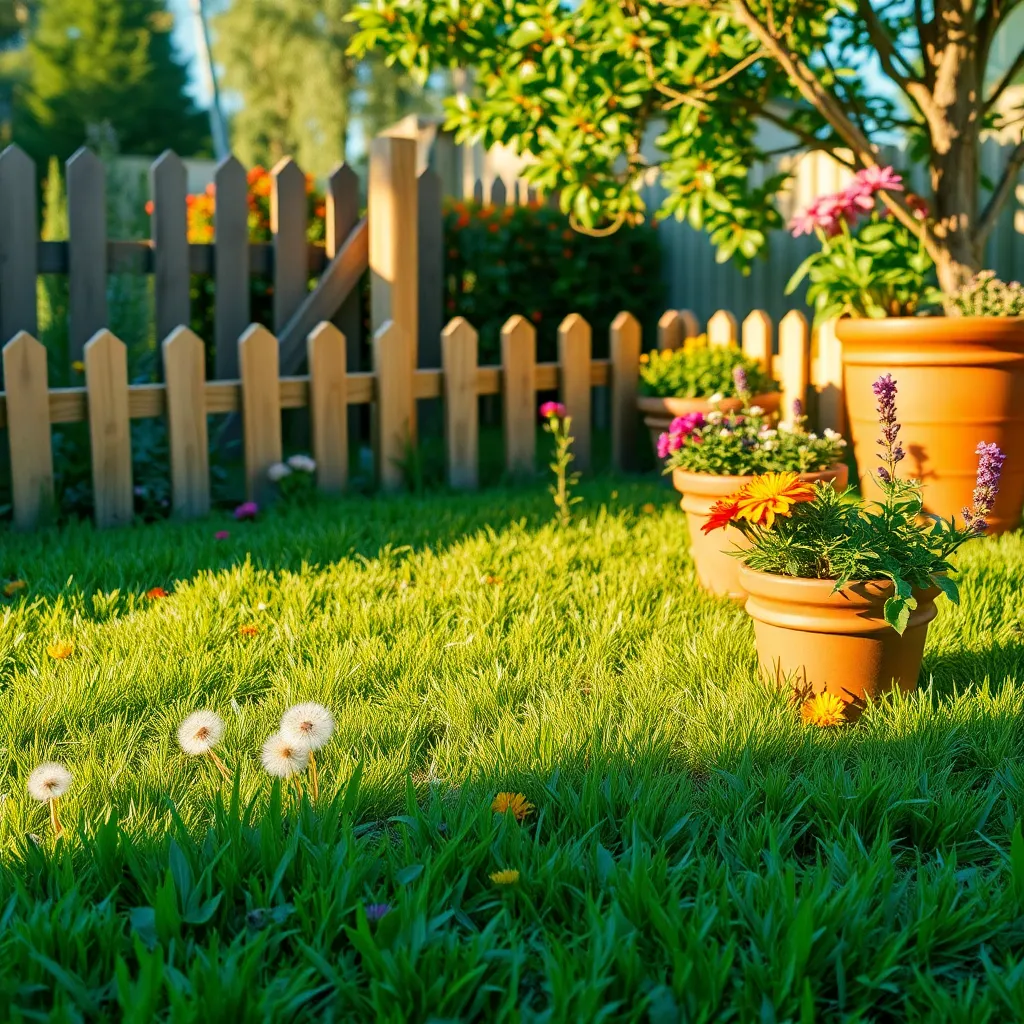
Creating a safe play zone for your pets in the garden involves thoughtful planning and design. Begin by selecting a dedicated area in your garden that is secure and away from any roads or hazards, ensuring it’s large enough for your pet to roam freely.
It’s important to use materials that are both durable and non-toxic for your pet’s play area. Consider using materials like untreated wood chips or crushed gravel as these surfaces are soft on paws and reduce the risk of injury.
For beginners, start by installing a simple fence around the play zone to keep your pet safely contained. Ensure that the fence is tall enough to prevent any escapes and is securely anchored into the ground.
Advanced gardeners may want to incorporate additional features like tunnels or climbing structures made from pet-safe materials, adding both fun and mental stimulation for your pet. These structures should be checked regularly for wear and tear to ensure ongoing safety.
For added comfort, provide shaded areas within the play zone using pergolas or strategically planted trees. This not only protects pets from the sun but also enhances the aesthetic appeal of your garden.
Install Secure Garden Fencing
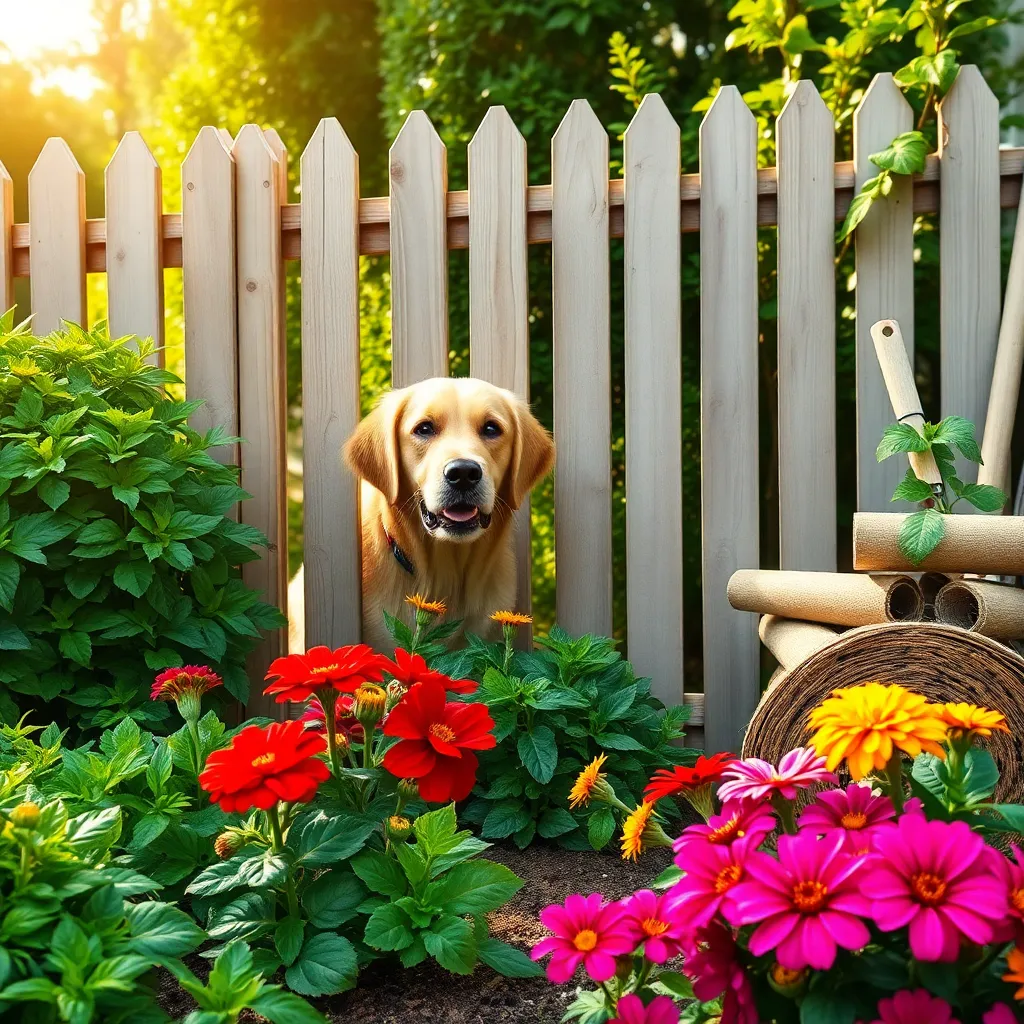
To ensure your garden is a safe haven for your pets, installing secure fencing is crucial. Begin by selecting a fence material that is durable and pet-friendly, such as vinyl or wood, which can withstand the elements and prevent escape.
Consider the height of the fence, especially if you have larger pets who are adept at jumping. A *minimum height of 6 feet* is generally recommended for dogs, while shorter fences may suffice for smaller animals.
It’s essential to check for any gaps or openings at the base of the fence where small pets might squeeze through. For added security, bury the bottom of the fencing several inches into the ground to deter digging.
For those looking to enhance the durability of their fence, consider adding wire mesh to the inside of the structure. This additional layer can provide an extra level of protection against curious pets trying to find a way out.
Provide Shaded Rest Areas
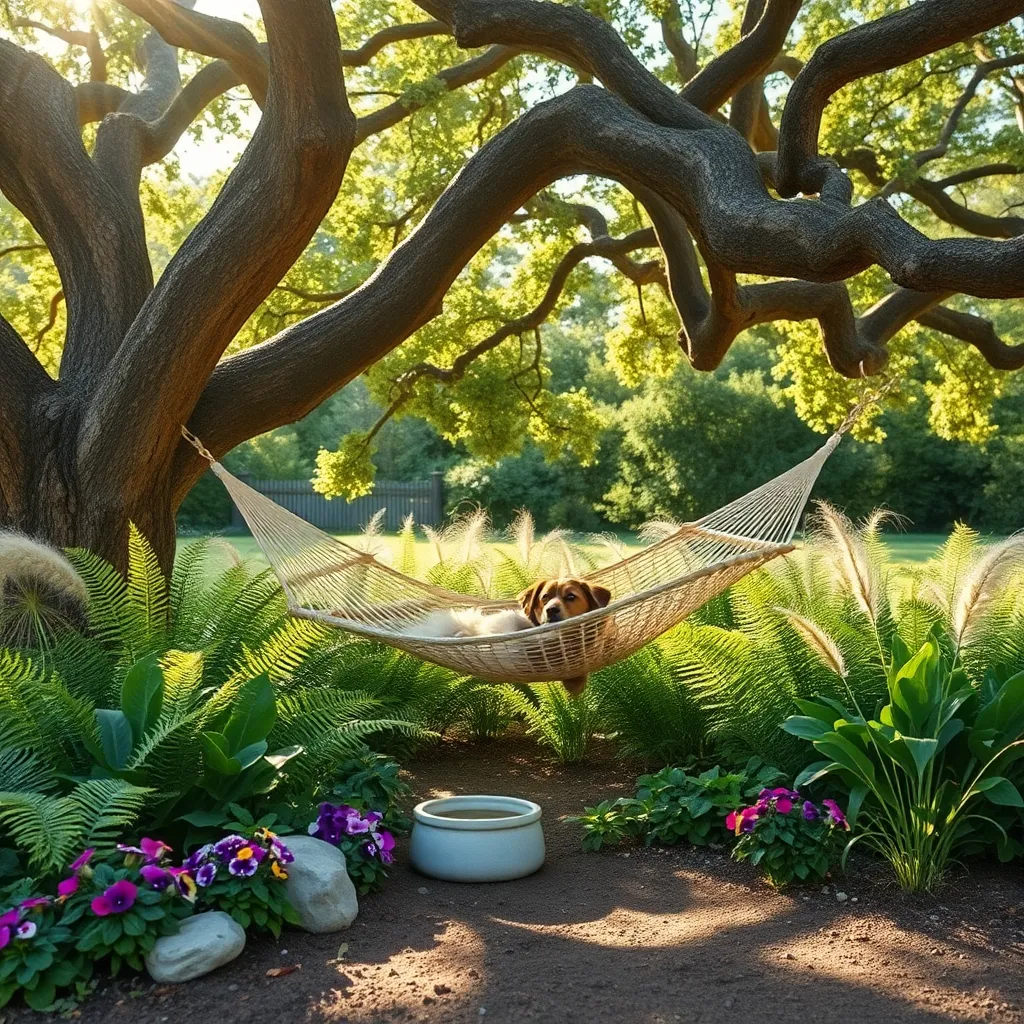
Creating shaded rest areas in your garden is essential for keeping your pets comfortable during hot days. Start by selecting areas that receive natural shade, such as beneath large trees or next to tall hedges, which can provide a cool retreat for your furry friends.
Consider planting fast-growing trees like willows or maples to establish shade quickly. These trees not only provide shelter but also enhance the garden’s beauty with their lush foliage.
For smaller gardens or patios, use structures like pergolas or shade sails to create shaded spots. These can be adorned with climbing plants such as clematis or wisteria, which offer both shade and a burst of seasonal color.
Ensure the soil around these shaded areas is well-draining, as damp soil can lead to fungal problems. Mulch the ground with bark or wood chips to keep it cool and reduce moisture loss, providing a comfortable surface for pets to lay on.
Regular watering is crucial for maintaining plant health in these shaded zones. Water deeply but less frequently to encourage deep root growth, and consider installing a drip irrigation system for consistency.
Ensure Accessible Water Sources
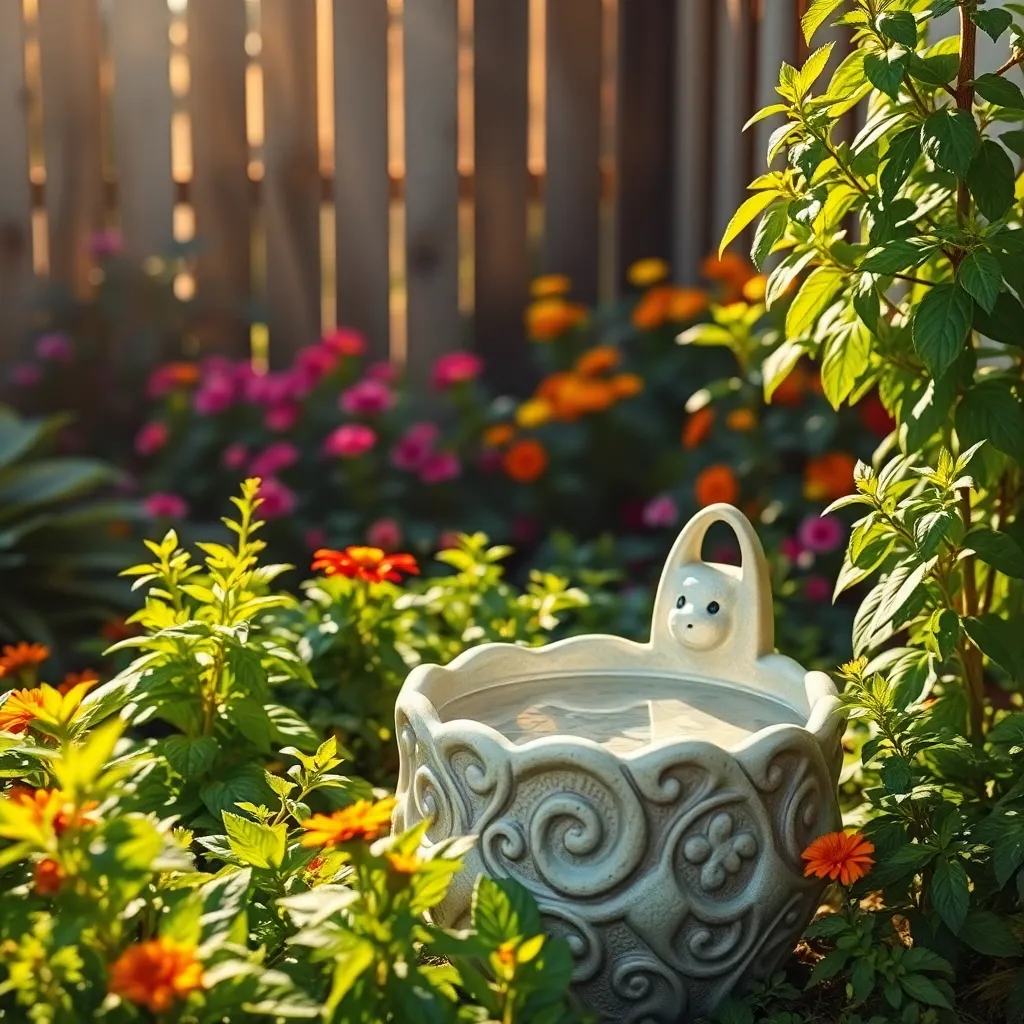
Ensuring that pets have access to clean and fresh water in the garden is essential for their health and well-being. One practical way to achieve this is by placing shallow water bowls in shaded areas to keep the water cool throughout the day.
For those who want to minimize maintenance, consider installing a small, circulating water feature. This not only provides a constant source of fresh water but also adds an attractive element to your garden design.
Regularly check and refill the water sources to ensure that they are always available, especially during hot weather when evaporation rates are higher. Using rainwater collected in barrels can be an eco-friendly option for refilling these water sources.
It’s crucial to keep water bowls and features clean to prevent the growth of algae and bacteria, which can be harmful to pets. A simple mixture of water and vinegar can be used to scrub these areas clean every few days.
Conclusion: Growing Success with These Plants
In creating a pet-friendly garden, we’ve explored five essential concepts that mirror the nurturing dynamics of successful relationships. First, understanding your pet’s unique needs is akin to recognizing a partner’s individuality, fostering mutual respect. Second, designing safe spaces reflects the importance of creating environments where trust can flourish. Third, choosing non-toxic plants parallels prioritizing each other’s well-being. Fourth, engaging in interactive play symbolizes the joy found in shared activities. Lastly, maintaining your garden highlights the ongoing commitment required to nurture any relationship.
As a next step, take a moment today to assess your garden or relationship for areas of improvement. Start with one change that can enhance the harmony between your living space and your loved ones, whether they’re pets or partners.
Remember, growth in relationships is continuous. Bookmark this article to revisit these insights whenever you need guidance on nurturing both your garden and your connections. By cultivating these principles, you’ll be well on your way to achieving a thriving, harmonious environment that supports lasting relationship success.

